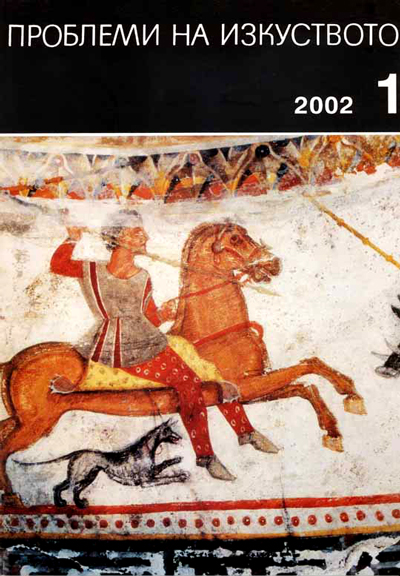Портретите на Александър Велики и техните имитации в римска Тракия
The Portraits of Alexander the Great and Their Imitations in Roman Thrace
Author(s): Vania Popova-MorosSubject(s): History, Archaeology, Fine Arts / Performing Arts, Cultural history, Visual Arts, Ancient World
Published by: Институт за изследване на изкуствата, Българска академия на науките
Summary/Abstract: There are several monuments found in Roman Thrace, influenced by the portraits of Alexander the Great. Head of a young man from Augusta Trayana imitates the famous type Alexander Schwarzenberg, but has whiskers and slight moustaches and a beard. May be this was a statue or a bust of the Paliatus type. The date is the second quarter of 2nd c. AD. The nearest parallels are the heads from Wienna in the Collection Schwarzenberg and the head from Monte Rotondo. Probably this was a private portrait, an imitation of Alexander the Great (imitatio Alexandri). A small statuette from the village of Zagortzi, district Nova Zagora, published by L. Ognenova-Marinova, is connected with another statue - one by Lysippos, namely Alexander-Heracles or another deity. L. Ognenova-Marinova suggested that this was a statue of Alexander-Pan and that he was holding a spear in the same hand with the mantel. But neither the position of the hands nor the laking of horns as attributes of Pan support it. The third numerous group of monuments reflects the equestrian statue of Lysippos, created after the battle at Granik, in votive steles and tomb steles and in small bronze votive statuettes where always presents the Thracian Horseman or Heros, generally from 1st -3th cc. AD. A very complex process preceded the synthesis between the Late Classical, Hellenistic, Thracian and Roman in the traditions of equestrian statue. The last group of monuments reflects the type of Alexander, created by Hellenistic sculptors with long curly hairs as a hero, god or personification. Two heads from Philippopolis, one published, imitate this type, in spite of the fact, that it is considered to be earlier and connected with Triptolemos. According to our opinion, it may be also a reflection of Alexander-Dionysos and Alexander-Helios. The Hellenistic cult of Alexander the Great was very strong in Thrace because of the concrete historical circumstances: his father founded Philippopolis, they both invaded Thrace or passed through it several times and after Alexander's death Lysimahos ruled over it. In Roman Thrace namely in Philippopolis games were organized under the name Alexandria, known at the time of Caracalla. The portraits of Alexander here turned to be un universalia for all levels of imperial propaganda, cult and sepulchral art in official, everyday and private life.
Journal: Проблеми на изкуството
- Issue Year: 2002
- Issue No: 1
- Page Range: 7-14
- Page Count: 8
- Language: Bulgarian
- Content File-PDF

